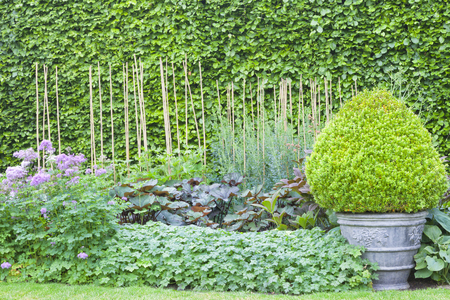Understanding Mulching and Its Benefits
Mulching is one of the most valuable gardening practices for UK families eager to turn everyday garden waste into something truly beneficial. At its core, mulching means covering the soil with organic or inorganic material, creating a protective layer that mirrors nature’s own methods. In British gardens, where weather can shift from soggy to sun-drenched in a single afternoon, mulch acts like a cosy blanket for your plants’ roots—helping them stay cool when it’s hot, warm when it’s chilly, and moist even when rain is scarce. This simple act of recycling garden waste not only reduces landfill contributions but also feeds the soil beneath our feet, encouraging worms, beneficial microbes, and flourishing plant life. For parents and children alike, mulching offers a chance to connect with the rhythms of the natural world together: gathering autumn leaves, grass clippings, or bark chips and spreading them over flowerbeds or veggie patches. The result? Healthier plants that need less watering and weeding—plus a sense of pride in giving back to the earth by turning what might be thrown away into golden nourishment for your family’s outdoor haven.
Types of Garden Waste Suitable for Mulch
When you stroll through a British garden, there’s a gentle rustle underfoot—evidence of nature’s generous cycle. As parents and children work side by side, it’s heartening to know that much of the “waste” we gather can be transformed into nourishing mulch for our beloved plots. But which types of garden waste truly deserve a place on your mulch pile? Let’s explore some common UK garden leftovers and discover their mulching potential together.
Common Types of Garden Waste in the UK
The typical British garden yields a variety of organic materials throughout the seasons. Each brings its own set of benefits when used as mulch, but not all are equally suitable. Here’s a handy table to guide your selection:
| Type of Waste | Availability | Mulching Suitability | Special Notes |
|---|---|---|---|
| Grass Clippings | Spring to Autumn | High | Apply in thin layers to avoid matting; best if untreated by chemicals |
| Autumn Leaves | Autumn | Excellent (especially after shredding) | Shred or let them break down slightly before use to speed up decomposition |
| Hedge Trimmings | Spring & Summer | Good (if shredded) | Avoid woody stems thicker than 1cm unless chipped first |
| Prunings from Shrubs & Trees | All year round (mainly winter/spring) | Moderate to Good (after chipping/shredding) | Larger pieces need chipping; avoid diseased wood |
| Old Bedding Plants & Annuals | Late Summer/Autumn | Moderate | Avoid using any with signs of disease or pest infestation |
| Vegetable Plant Remains | End of Growing Season | Good (if healthy) | Avoid blighted or diseased material; chop up larger pieces for faster breakdown |
| Pine Needles & Cones | Mainly Autumn/Winter (in pine-rich areas) | Specialist Use (acid-loving plants only) | Slightly acidic, best for rhododendrons, azaleas, and blueberries |
A Parent-and-Child Note: Learning Together in the Garden
Selecting suitable waste for mulching is not just practical—it’s a chance to teach young gardeners about recycling and soil health. Encourage children to help sort leaves from prunings, discussing why certain materials work better than others. It’s a gentle way to blend eco-friendly habits with daily life, all inspired by the cycles found in nature right at our feet.
Cautions on What Not to Use
Avoid using weeds with seeds, thick woody branches unless properly chipped, and anything treated with persistent herbicides or showing signs of disease. Safety and plant health come first—so when in doubt, leave it out or compost separately until fully broken down.
This mindful sorting turns everyday chores into golden opportunities for connection and learning—while giving your UK garden exactly what it needs to thrive.
![]()
3. Step-by-Step Mulching Techniques
Ready to transform your garden waste into a nourishing blanket for your plants? Follow this practical, step-by-step approach and you’ll soon see your borders, beds, and allotments flourishing—come rain or shine, as is often the case in the UK!
Step 1: Gather and Prepare Your Materials
Start by collecting organic garden waste suitable for mulching, such as grass clippings, autumn leaves, hedge trimmings, bark chippings, and well-rotted manure. Give everything a good check to ensure it’s free from weeds and seeds that could sneak into your beds later. If you’re working with larger pieces, chop them up to help them break down more efficiently—think of it as prepping dinner for your plants!
Step 2: Clear and Moisten the Area
Before applying mulch, clear away any existing weeds or debris from the soil surface. A tidy space gives your mulch the best chance to work its magic. It’s also wise to water the ground first, especially if the weather’s been dry—a moist base helps mulch settle in and start doing its job straight away.
Step 3: Layering Your Mulch
Aim for a layer about 5–7cm (roughly 2–3 inches) thick. Too thin and weeds might poke through; too thick and you risk smothering delicate roots or encouraging rot. Gently spread the mulch around your plants, keeping a small gap around stems and trunks to allow air circulation—plants need breathing space just like we do!
Special Tips for British Weather
The ever-changeable British climate calls for some savvy tricks. In wetter months, opt for coarser materials like bark chips or straw that won’t mat down and go soggy. For drier spells, finer mulches like leaf mould or compost help retain precious moisture—especially handy during those surprise heatwaves!
Caring for Your Mulched Beds
Give your mulch a quick check every few weeks. Top up where it’s thinning out, especially after heavy rain or wind. Each season brings new tasks—autumn is perfect for adding a fresh layer to protect against winter chills, while spring is ideal for locking in moisture ahead of summer sun.
By following these steps and tuning into nature’s rhythms (and the British forecast!), you’ll turn humble garden leftovers into golden nourishment for your green spaces—nurturing both plants and family memories along the way.
4. Mulch Materials: Pros, Cons, and Local Sources
When it comes to mulching in the UK, there’s a delightful array of materials you can use—each with its own strengths and quirks. Choosing the right mulch isn’t just about what’s at hand; it’s also about understanding your garden’s needs and tapping into local resources for a sustainable approach.
Homemade vs Shop-Bought Mulch: What’s Best for Your Garden?
Many families find that making their own mulch from garden waste not only reduces landfill but also creates a sense of accomplishment—like turning dandelions into treasure! Still, shop-bought options have their place, especially when you need something specific or instant. Let’s explore both:
| Type | Examples | Pros | Cons | Local Sources |
|---|---|---|---|---|
| Homemade | Leaf mould, grass clippings, shredded prunings, compost | Cost-effective Reduces waste Full control over ingredients Nutrient-rich (especially compost) |
Takes time to prepare Pest/disease risks if not done properly May look untidy compared to commercial options |
Your own garden Neighbourhood swaps Council green waste schemes (compost) |
| Shop-bought | Bark chips, wood chippings, straw, cocoa shells, slate chippings | Immediate effect Tidy appearance Disease-free and uniform texture Some are long-lasting (e.g. bark) |
Can be pricey Transport emissions if sourced far away Certain types may be unsuitable for pets/kids (e.g. cocoa mulch) |
Garden centres DIY stores Agricultural suppliers Council outlets (sometimes sell bulk compost or mulch) |
Finding Mulch Materials Locally: Tips & Community Spirit
Council Green Waste Schemes:
If you’re keen on sustainability, check if your local council offers free or low-cost compost or wood chips. Many UK councils collect garden waste and turn it into mulch or soil improver—perfect for eco-minded families and budding young gardeners!
Neighbourhood Resources:
Keep an eye out for community noticeboards or social media groups where neighbours share excess prunings or offer leaf litter in autumn. It’s a fantastic way to connect with others while helping your garden thrive.
A Parent’s Tip:
If you’re introducing children to gardening, homemade mulches like leaf mould let little hands get involved—from raking up crispy leaves in autumn to spreading the finished product around favourite plants come spring.
Sow Seeds of Sharing!
The UK gardening tradition is rooted in sharing—from allotment swaps to council schemes. Embrace this spirit by sourcing locally whenever possible; your plants (and the planet) will thank you!
5. Seasonal Mulching Tips for the UK Climate
When it comes to mulching in the UK, timing really is everything—just like choosing the right moment to pop out between showers with your little one for a bit of garden exploring. Each season brings its own peculiar twists, from sudden spring downpours to long, misty autumns. Here’s how to make your mulching efforts count, no matter what our wonderfully unpredictable weather throws at you.
Spring: Harnessing New Beginnings
As daffodils and bluebells start peeking through, spring is prime time for giving your beds a fresh layer of mulch. Wait until the soil has warmed up a touch—usually late March or April—and the worst of the frost has passed. This helps lock in moisture ahead of summer’s dry spells and keeps those pesky weeds at bay. Involve your children by letting them scatter mulch around delicate shoots, turning garden chores into an outdoor adventure.
Summer: Keeping Cool Under Pressure
The British summer might be famous for its unpredictability (suncream one minute, raincoats the next!), but consistent mulching can help your plants stay resilient. Top up mulch if you notice it thinning out, especially after heavy rainfall. Focus on water retention—mulch acts like a snuggly blanket for roots, keeping them cool during any surprise heatwaves and reducing the need for constant watering.
Autumn: Preparing for Rest
As leaves begin to fall and nights draw in, autumn is all about preparing your garden for a restful winter. Use shredded leaves and other compostable waste as a natural mulch to protect plant roots from early frosts. This is also a wonderful opportunity to teach children about nature’s cycles—watching fallen leaves become nourishing mulch for next year’s growth is pure magic!
Winter: Shielding Against the Chill
Winter in Britain can be tough on gardens, with biting winds and occasional snow. Apply a thicker layer of mulch around vulnerable plants and shrubs to insulate roots and reduce soil erosion from heavy rains. If you’ve got evergreen beds or pots near the house, let little hands help pile up bark or straw as “winter duvets” for your favourite blooms. Come spring, you’ll both delight in seeing which hardy survivors emerge first.
Final Thought: Adapting with Nature
Every UK gardener knows that flexibility is key—sometimes we plan a mulching day only for the heavens to open! Embrace these quirks as part of family life outdoors. By timing your mulching efforts with nature’s rhythms, you’re not just nurturing your garden—you’re growing lifelong memories together.
6. Family-Friendly Mulching Activities
Transforming garden waste into nourishing mulch is not just a sustainable practice—its also a wonderful way to bring the whole family together outdoors. Engaging children in mulching opens up opportunities for hands-on learning and bonding, while gently instilling respect for nature and environmental stewardship.
Get Little Hands Involved
Invite children to collect leaves, grass clippings, or small twigs from around the garden. Arm them with mini wheelbarrows or baskets and turn it into a friendly scavenger hunt. Along the way, you can talk about how each material contributes to healthy soil and vibrant plants—a gentle introduction to composting and recycling right in your back garden.
Mulch Art and Creativity
Let creativity bloom by encouraging youngsters to arrange mulch around flower beds in fun patterns or shapes. Perhaps they’d like to make a winding path of bark chips for garden fairies or craft little circles around their favourite plants. This activity not only makes the job enjoyable but also gives children a sense of ownership over their growing space.
Learning Through Play
As you work together, share stories about how mulching helps keep moisture in the soil and protects plant roots through chilly UK winters. You might even set up a simple experiment: leave one section of the garden unmulched and another well-covered, then observe together how the plants fare over time. These shared discoveries foster curiosity and appreciation for sustainable gardening.
By making mulching an interactive, family-friendly routine, you’re not only turning garden waste into gold—you’re planting seeds of knowledge and care that will flourish for seasons to come.
7. Troubleshooting & FAQs
Common Questions from UK Gardeners
Mulching with garden waste can feel a bit daunting at first, especially if you’re new to the idea of transforming your clippings and prunings into garden gold. Here are some frequently asked questions from fellow UK gardeners—and friendly advice to set you on the right path.
Why does my mulch smell unpleasant?
If your mulch starts to smell sour or unpleasant, it’s likely too wet or hasn’t had enough air. This can happen in our rainy British climate! Turn your mulch pile with a fork and consider mixing in dry materials such as shredded newspaper or autumn leaves to balance out moisture.
Will mulching encourage slugs and snails?
Slugs do love a cool, moist environment, so certain mulches can attract them. Try using coarser mulches—like bark chips—or place a rough barrier (such as crushed eggshells) around your more vulnerable plants. Regularly check under the mulch for any unwelcome visitors.
How thick should I spread my mulch?
A layer about 5–8cm (2–3 inches) deep is perfect for most UK gardens. Any thinner and weeds might sneak through; any thicker, and roots may struggle for air. Remember not to pile mulch right up against stems or trunks—leave a gap to prevent rot.
Can I use grass clippings straight from mowing?
Fresh grass clippings are rich in nitrogen but can mat together and go slimy. Let them dry out for a day or two before spreading, and mix with other garden waste like leaves or shredded twigs for best results.
What if weeds grow through my mulch?
No mulch is entirely weed-proof, but it makes weeding much easier! Pull out any cheeky weeds as soon as they appear, ideally after rain when the soil’s soft. Top up your mulch annually to keep things under control.
Top Tips for Ongoing Mulching Success
- Use locally sourced garden waste whenever possible—it’s good for your patch and the planet!
- Refresh your mulch every spring and autumn for year-round benefits.
- Keep an eye on moisture levels during wet spells (very common here in Blighty!)
Remember:
Every garden is unique—don’t be afraid to experiment, involve the whole family, and let your plants “tell” you what works best. With a bit of patience and curiosity, you’ll soon be turning yesterday’s trimmings into tomorrow’s bounty.


